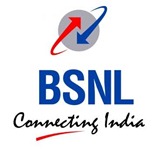Telecom Tuesday: Tata Tele growth, BSNL MNP Implementation, Rural Internet Penetration
Tata Teleservices has not become the 4th largest Telecom Operator in India

Tata Teleservices has crossed the 75 million subscriber mark to become the fourth largest telecom operator in the country leaving behind state operated BSNL. The three telecom operators Airtel, Vodafone and Reliance have all over 100 million wireless subscribers with Airtel at the top.
The growth of Mobile subscribers has been primarily led by Tata Docomo, the GSM based offering which has constantly launched path breaking pricing plans as well as innovative data schemes. Infact, Tata Docomo launched last year with “one paisa per second” plan which set the tone for Entire Indian telecom Industry.
Tata Tele has doubled its subscriber base in last one year going from 38.1 million mobile subscribers in July 2009 to 76.9 Million in August 2010.
BSNL says it is ready to offer MNP to its subscribers

Mobile Number Portability has been already seen postponement of dates more than 4 times. But, it seems that we may get lucky the 5th time. There are signs that MNP will be implemented this time.
BSNL has gone ahead and announced that it is ready with its infrastructure to implement MNP for its subscribers.
Having said that, it does not necessarily mean that larger Operators will be ready by then…Infact, they are quite reluctant to offer MNP to their subscribers and fear that the service may lead them to lose a significant number of subscribers to their competitors. Also, some of these Telecom operators want compensation from the government in lieu of possible financial loss that they will suffer after implementing the MNP.
Guess, only time will tell if MNP will be implemented by Oct. or we will see yet another postponement.
84% of rural India are unaware of Internet
Although, Urban India has adopted Internet in large numbers (especially younger generation), Internet penetration in Rural India is close to zilch. Even though Government is making huge efforts to increase the penetration, it seems to be failing miserably.
According to the survey conducted jointly by IAMAI and IMRB, about 84 percent of people in rural India are not aware of Internet. The organizations believe that this lack of awareness is the primary reason that has prevented internet take-up in rural India.
The research further found that 38 percent of rural inhabitants feel no need for internet access. Further reasons for not using the internet include lack of an internet access point (31%), unfamiliar with computers (31%), no computer available (28%), need for guidance (28%), no electricity (22%), and not being able to afford internet (10%).
At present, common service centers and cyber cafés serve as the primary mode of accessing internet, with more than 70 percent of the rural population accessing the internet this way.
